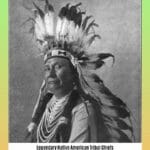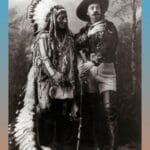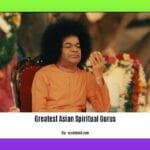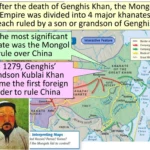A Chiricahua Apache Artist’s Provocative Vision
Meet Bob Haozous, a Chiricahua Apache sculptor and activist whose monumental creations challenge conventional perspectives on history, identity, and the modern Indigenous experience. His impactful sculptures and paintings, infused with satire and often crafted from steel and stone, tell stories that resonate on a global scale. Haozous’s art transcends mere aesthetics; it’s a call to action, sparking dialogue and prompting viewers to reconsider their understanding of Indigenous art and its place in the world.
Coming from a family deeply rooted in artistic tradition—his father was the acclaimed sculptor Allan Houser—Haozous carves his own distinct path. He masterfully blends traditional Apache motifs with modern materials and techniques, creating a visual language that speaks volumes about cultural identity in a rapidly changing world. This fusion of tradition and innovation is central to understanding Haozous’s artistic vision.
Who is Bob Haozous: Unveiling the Artist and His Legacy
Born in 1943, Bob Haozous’s artistic journey began amidst a family already steeped in creativity. His father, the celebrated Apache sculptor Allan Houser, and his mother, Anna Marie Gallegos, a Navajo-Mestiza textile artist, cultivated an environment where artistic expression flourished. Growing up surrounded by this legacy likely played a pivotal role in shaping Haozous’s artistic sensibilities and his deep connection to his heritage. He honed his skills at the California College of Arts and Crafts, ultimately gravitating towards large-scale sculpture, a medium that would become synonymous with his powerful artistic voice.
Haozous’s work challenges romanticized stereotypes of Native Americans, urging viewers to confront a more nuanced and complex reality. His sculptures, often massive in scale, command attention and demand engagement. He masterfully blends traditional Apache motifs with modern materials like steel, creating a powerful juxtaposition that reflects the evolving nature of Indigenous identity in the modern world. This interplay between the ancient and the contemporary is a hallmark of his style.
Deconstructing Identity: Challenging Stereotypes Through Art
Bob Haozous’s art is not merely about aesthetics; it’s about dismantling stereotypes and sparking crucial conversations about identity, history, and social justice. His work serves as a platform for what he calls “Indigenous dialogue,” emphasizing the importance of cultural preservation and challenging viewers to confront their own biases.
One of the most striking aspects of Haozous’s approach is his use of humor and satire to address challenging topics. Rather than delivering heavy-handed messages, he employs irony and wit, inviting viewers to engage with complex issues through a lens of critical thinking. This approach broadens his reach, making his work accessible to a wider audience.
Haozous’s large-scale sculptures, such as the impressive “House of the Sun,” stand as powerful symbols of Indigenous resilience and the enduring strength of Native cultures. These monumental pieces, often placed in public spaces, become catalysts for public engagement and dialogue.
Beyond the Surface: Probing the Provocative Themes in Haozous’s Art
Bob Haozous’s sculptures are not passive objects; they are provocative statements that challenge viewers to confront uncomfortable truths about history, identity, and the human condition. He fearlessly tackles themes of social injustice, environmental degradation, and the ongoing fight for Indigenous rights, using his art as a platform to amplify marginalized voices and inspire change.
His work often incorporates bold imagery and unsettling juxtapositions, prompting viewers to question their assumptions and confront their own biases. The recurring motif of “sleeping figures” in his sculptures, for instance, has been interpreted as a metaphor for the disconnect that can exist between contemporary Indigenous communities and their ancestral philosophies, urging a reawakening of cultural consciousness.
From Santa Fe to Venice: Charting Haozous’s Artistic Trajectory
Bob Haozous’s artistic journey has taken him from the vibrant art scene of Santa Fe to the prestigious halls of the Venice Biennale, reflecting a career defined by growth, exploration, and increasing global recognition. His early participation in the Santa Fe Indian Market, a renowned showcase of Native American art, likely played a crucial role in shaping his understanding of Indigenous art’s place in the broader art world.
His selection to represent the United States at the Venice Biennale, not once, but twice (1999 and 2001), marked a pivotal moment in his career, bringing his powerful sculptures to the attention of an international audience. This prestigious platform solidified his status as a major figure in contemporary art.
The Enduring Impact of Bob Haozous: Igniting Conversations and Challenging Conventions
Bob Haozous’s impact extends far beyond the creation of visually stunning sculptures; his art ignites conversations, challenges conventions, and inspires generations of artists and activists. He consistently pushes boundaries, using his platform to advocate for social change, environmental justice, and a deeper understanding of Indigenous perspectives.
His legacy is one of courage, challenging viewers to confront uncomfortable truths and engage in meaningful dialogue about the world around them. Haozous’s willingness to engage with challenging themes and his dedication to amplifying Indigenous voices continue to resonate deeply, ensuring that his art remains relevant, thought-provoking, and impactful for generations to come.
Key Points about Bob Haozous
- Chiricahua Apache sculptor renowned for his monumental creations.
- Challenges perspectives on history, identity, and modern Indigenous life.
- Blends traditional Apache motifs with contemporary methods and materials.
- Tackles social justice issues through humor and satire, avoiding preachiness.
- Provides an Indigenous perspective often ignored or silenced in historical narratives.
- Exhibited globally, promoting “Indigenous dialogue” and cultural preservation.
- Advocates for Indigenous rights, environmental protection, and community well-being.
- Inspires younger generations of Indigenous artists and empowers them with his legacy.
- His art’s meaning continues to evolve with each new generation’s interpretation.
If you want to know more about the influential Andrew Carnegie Gospel of Wealth and how it shaped the philanthropic landscape, click on the link to read further.
- Unlock Filipino Culture: A Deep Dive into Traditions and Practices - April 23, 2025
- Unlock Spanish Culture: Insights & Opportunities Now - April 23, 2025
- White Spirit Uses & Substitutes: A Deep Dive for Pros & DIYers - April 23, 2025
















